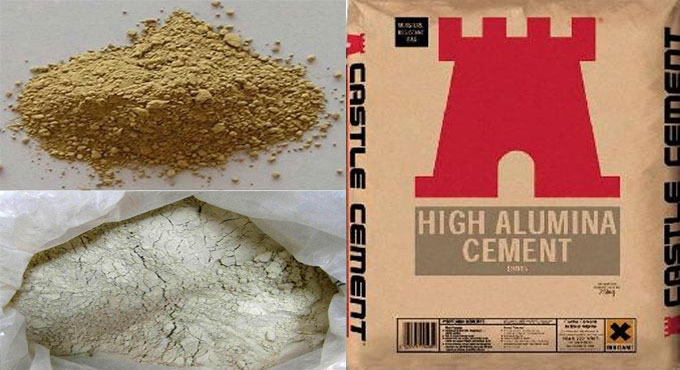
List of the Benefits and Drawbacks of Alumina Cement

Calcium aluminates cement (CAC) and aluminous cement, both known as High Alumina Cement (HAC), are made of calcium aluminates instead of calcium silicates. Calcium carbonate and bauxite are the main ingredients.
Composition
Calcium aluminates cement is mainly composed of monocalcium aluminates (CaAl2O4, CaO, Al2O3, or CA). Additionally, it may contain other calcium aluminates and some less reactive phases from materials that contain impurities. The composition of aluminum can vary significantly depending on its application and purity.
| Constituents | Percentage |
| Silica | 3-8% |
| Alumina | 37-41% |
| Iron Oxide | 9-10% |
| Titanium | 1.5-2% |
| Magnesium | 1% |
| Lime | 36-40% |
| Insoluble Resides | 1% |
Manufacturing
Taking a mixture of alumina and calcareous materials and mixing them in the appropriate proportions and sintering or fusing them and grinding them to a fine powder, high alumina cement is eventually produced. High alumina cement is primarily made from limestone and bauxite. Both of these ingredients were placed in the furnace.
A hot air blast is used in the furnace to burn pulverized coal or oil. About 1550?C to 1600?C is the temperature at which fusion takes place in the furnace. A liquid state is maintained in the furnace for cement. After filling the molds with the molten cement, it is cooled.
Castings such as these are called pigs. A black, finely crystalline compact rock, very similar in structure and hardness to basalt rock, results from cooking this molten cement. After cooling, the fused cement pigs are crushed & then ground in tube mils to a fineness of 3000sq.cm/gm.
Advantages of High Alumina Cement
1. More than 3.5 hours are required for this cement to set initially. Approximately 5 hours are required for setting. As a result, it provides more time for mixing and placing.
2. High temperatures are not a problem.
3. The process of setting generates a large amount of heat. As a result, it cannot be affected by frost.
4. The material resists acidic attacks better than other materials.
5. A quick set and a high ultimate strength are achieved in a short time. Upon one day's use, it has a resistance of about 40 N/mm2, but after three days, its resistance is about 50 N/mm2.
6. In most cases, it does not need to be ground to a fine powder since its setting action depends on chemical reactions.
Disadvantages of High Alumina Cement
1. Extreme care must be taken to ensure that it doesn't come into contact with any lime or ordinary cement.
2. The fact that it dries so quickly makes it unsuitable for mass construction.
3. It is expensive.
Applications of High Alumina Cement
1. Refractory concrete also contains HAC, since it needs to be more durable at very high temperatures.
2. Despite low temperatures, concrete needs to acquire strength rapidly.
3. As a liner for sewer infrastructure to prevent microbial corrosion
4. It needs to have properties such as ultra-rapid strength development and controlled expansion as a component in blended cement formulations.
5. Biogenic sulfide corrosion is not a problem for them in sewer networks.
Conclusion
Aluminum cement has special properties that make it a quick binder. Components made from this material are typically exposed to high temperatures of + 1300*?C, making them non-standard. In addition, it can be found in adhesives and mortars. Setting time is extremely short. As it increases mechanical strength, it becomes more resistant to aggressive sulfates. Reinforced concrete can be constructed with it. The laying of concrete can even be done in temperatures as low as -10*?C using Alumina cement mortar.
Among the mortar components are a meal of chalcedonies with pozzolanic properties, whose particle size is less than 0.063?1 / 4m. There were two different levels of meal added to the cement. Laboratory research is conducted with chalcedonies meal, a waste material generated from chalcedonies aggregate mining.
It is similar to the rock that it originated from. A study was conducted to compare the compressive strength, water absorption, and capillary strength of hardened mortar. Adding 20% chalcedonies meal to alumina cement mortars will decrease durability by 6.1% compared to alumina cement mortars without a meal.
Alumina cement without chalcedonies meal added reduces weight gains in mortars that use alumina cement. In comparison to Portland cement mortars without meal added, alumina cement without meal causes mass gains of 248% in mortars that use alumina cement. Capillary action tests showed no increase in weight gain after adding chalcedonies meal. As compared to Portland cement mortars after 28 days, alumina cement mortars gained 24.7% less weight.


